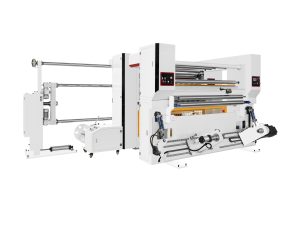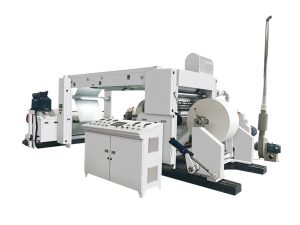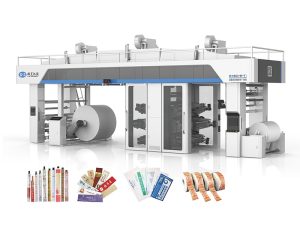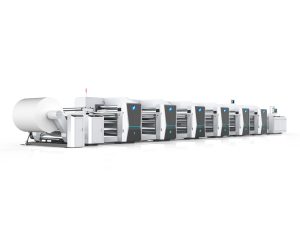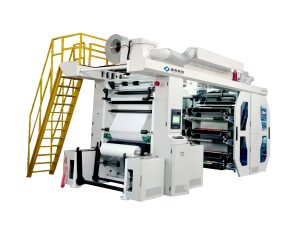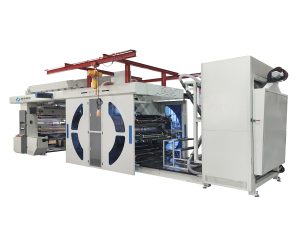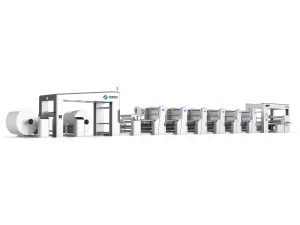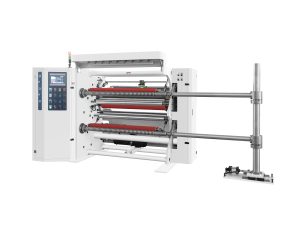In today’s competitive packaging industry, CI flexo presses and stack flexo printing machines are critical for achieving high-speed, high-quality production. Understanding the working principle of CI flexo printing machines allows Business buyers to select the right flexographic printing presses, optimize production efficiency, and ensure consistent print quality across various substrates.
This blog provides 6 key working principles of the CI flexo printing process, highlights the core components, and explains how each part interacts with the flexo printing workflow. By understanding this process, packaging manufacturers can make informed decisions, reduce downtime, and maximize ROI.
Table of Contents
ToggleCore Components of a CI Flexo Printing Machine
Central Impression Cylinder
The central impression (CI) cylinder is the heart of the CI flexo press. It holds the substrate in place and ensures consistent pressure across the print surface, enabling precise registration for multi-color applications.
Printing Plate Cylinder
The printing plate cylinder carries photopolymer plates that transfer the image to the substrate. Correct mounting ensures accurate ink transfer and repeatable print quality.
Anilox Roller
The anilox roller meters ink from the fountain to the plate cylinder. Its cell volume and engraving pattern determine the amount of ink delivered, directly impacting color density and print quality.
Doctor Blade System
This system removes excess ink from the anilox roller to prevent streaks or uneven coverage. Proper blade setup ensures consistent ink application, especially in multi-color processes.
Drying & Curing Units
CI flexo presses use UV, IR, or hot-air drying units. These ensure fast ink curing, prevent smudging, and maintain substrate integrity. Efficient drying is crucial for high-speed packaging production.
Optional Accessories
Modern CI flexo presses may include:
-
Inline inspection systems for defect detection
-
Automatic plate changers for faster setup
-
Web tension controllers to reduce substrate wrinkles
These accessories enhance productivity, reduce waste, and maintain flexo print quality.
Key Working Principles of CI Flexo Printing Machines
Step 1: Plate Preparation & Mounting
You start by preparing the printing plates, which are typically made from flexible photopolymer. These plates are critical because they carry the image or text you want to print. When you mount the plates onto the plate cylinder, you must ensure they are aligned precisely to achieve consistent registration throughout the run. Proper mounting guarantees that every print you produce is sharp, clear, and accurate.
Step 2: Ink Application via Anilox Roller
Next, you rely on the anilox roller to apply the right amount of ink to your plates. The roller’s engraved cells pick up ink from the fountain and transfer it evenly onto the plate surface. By controlling the roller’s cell volume and ink viscosity, you ensure that the colors you print are consistent, vibrant, and free of streaks.
Step 3: Substrate Feeding & Registration
You then feed the substrate over the central impression cylinder, making sure it is held under consistent tension. Accurate registration is key here: by keeping the substrate properly aligned, you prevent misprints, wasted material, and color misalignment. This step ensures that each sheet or roll maintains the high-quality standards you expect from your CI flexo press.
Step 4: Printing & Color Layering
As the plate contacts the substrate under the pressure of the CI cylinder, the ink is transferred to create the printed image. You can build up multiple colors, layering them carefully to achieve the final design. Whether you are using process colors like CMYK or spot colors, proper layering is essential for vivid, professional results.
Step 5: Drying/Curing Process
Once the ink is applied, you move on to drying or curing. Depending on the type of ink you are using—water-based or UV—you adjust your drying system accordingly. Efficient curing ensures that your prints dry quickly, adhere properly, and remain durable, even under high-speed production conditions.
Step 6: Inline Inspection & Quality Control
Finally, you use inline inspection systems to monitor your print output. By checking for color density, alignment, and potential defects in real time, you can catch errors before they affect large runs. This step allows you to maintain consistency, minimize waste, and guarantee that every print meets your high standards.
Conclusion
Understanding the working principle of CI flexo printing machines is essential for Business procurement managers aiming to optimize packaging production. From the central impression cylinder to drying and inspection systems, every component plays a critical role in achieving high-quality flexo prints.
By choosing the right CI flexo press or stack flexo printing machine and leveraging proper process knowledge, companies can increase efficiency, reduce waste, and improve ROI.
Explore our range of CI flexo printing machines and flexographic printing presses designed for high-speed, high-quality packaging production. Contact us today to request a quote and see how our ci flexo printing machine solutions can improve your operations.


